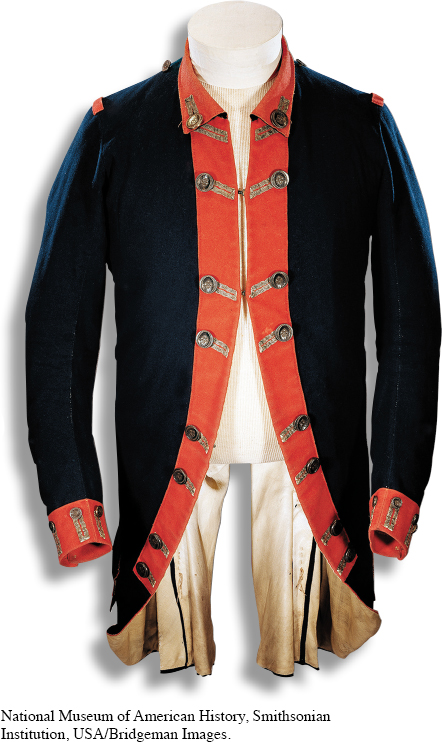The American Promise: Printed Page 165
The American Promise, Value Edition: Printed Page 152
The American Promise: A Concise History: Printed Page 176
Introduction to Chapter 7
The American Promise: Printed Page 165
The American Promise, Value Edition: Printed Page 152
The American Promise: A Concise History: Printed Page 176
Page 1657
The War for America
1775–

CONTENT LEARNING OBJECTIVES
After reading and studying this chapter, you should be able to:
Define the objectives of the Second Continental Congress.
Characterize the British and the American armies’ strengths and weaknesses during the first year of the Revolutionary War.
Explain how conflicts between patriots and loyalists played out on the local level.
Understand how the war proceeded in the North and West, and the roles Native Americans played in the war.
Consider King George III’s southern strategy from 1778 to 1781, including what went wrong for the British, and what were the terms of the peace.
ROBERT SHURTLIFF WAS A LATECOMER TO THE AMERICAN Revolution, enlisting in the Continental army after the last decisive battle at Yorktown had been fought. The army still needed fresh recruits to counter the British army occupying New York City. The standoff would last nearly two years before the peace treaty was finalized in Paris.
New recruits were scarce in a country exhausted by war. Attracted by cash bounties, beardless boys who had been children in 1775 now stepped forward, Shurtliff among them. Reportedly eighteen, the youth was single, poor, and at loose ends. With a muscular physique and proficiency with a musket, Shurtliff won assignment to an elite light infantry unit, part of Washington’s army of 10,000 men stationed north of New York City.
That is, 10,000 men and 1 woman. “Robert Shurtliff” was actually Deborah Sampson, age twenty-

A hard-
The American Promise: Printed Page 165
The American Promise, Value Edition: Printed Page 152
The American Promise: A Concise History: Printed Page 176
Page 166When Sampson’s true sex was finally discovered, she was discharged immediately. What eventually made Sampson famous was not her war service alone but her success in selling her story to the public. In 1797, she told her life story (a blend of fact and fiction) in a short book and then went on tour reenacting her wartime masquerade. Once again, she was crossing gender boundaries since women normally did not speak from public stages.
Except for her disguised sex, Sampson’s Revolutionary War experience was similar to that of most Americans. Disruptions affected everyone’s life, whether in military service or on the home front. Wartime shortages caused women to do male jobs. Soldiers fought for ideas, but they also fought to earn money. Hardship was widely endured. And Sampson’s quest for personal independence—
Political independence was not everyone’s primary goal at first. For more than a year after fighting began, the Continental Congress resisted declaring independence. Some delegates cautiously hoped for reconciliation with Britain. The congress raised an army, financed it, and sought alliances with foreign countries—
Once King George III rejected all peace overtures, Americans loudly declared their independence, and the war moved into high gear. In part a classic war with professional armies, the Revolutionary War was also a civil war between committed rebels and loyalists. It had complex ethnic dimensions, pitting Indian tribes allied with the British against others allied with the Americans, and international involvement as well from France and Spain. It also provided an unprecedented opportunity for some enslaved African Americans to win freedom, by joining either the British or the Continental army and state militias, fighting alongside white Americans.
CHRONOLOGY
| 1775 |
|
| 1776 |
|
| 1777 |
|
| 1777– |
|
| 1778 |
|
| 1779 |
|
| 1780 |
|
| 1781 |
|
| 1783 |
|